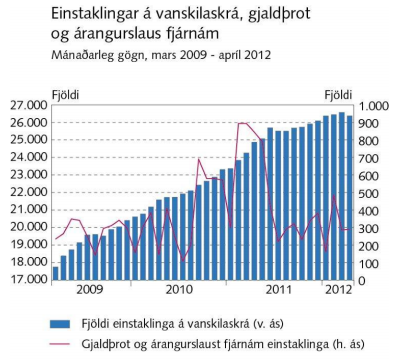- the coupon on the bond isn't 6.0% but "3.something" and then the market adjusts the price to whatever it thinks is appropriate
- 6.0% isn't too bad compared to other countries (I reckon with similar credit rating)
- USD isn't the currency of Iceland, therefore it's only normal that the risk on this USD bond is high
OK, so I went to the Bloomberg terminal here in Exeter (one of the few British universities that has an access to a Blooomberg terminal) and spent an hour looking up international bonds issued by other sovereign countries. This table summarises what I found:
Examples of USD bonds issued by sovereign states and maturing roughly in the same year as the Icelandic bond issued in May. Click to enlarge.
I tried to find sovereigns with similar credit rating and followed Moody's on that - I noted S&P's and Fitch's ratings as well. If I didn't find a bond maturing in 2022 I went for the one closest to that year. All bonds are in USD.
So what is this comparison telling us:
- of the Baa3 rated countries, only Croatia is getting a worse deal than Iceland. The yield on the Hungarian bond is higher than that of Iceland but it receives speculation grade.
- there are three Ba1 (speculation grade) countries that seem to get a better deal than Iceland. Notice especially Uruguay but that bond is sinkable so they should be getting a better deal.
- the yield on the Philippine bond is half the yield on the Icelandic bond, despite the fact that the Philippine bond is two credit notches worse
- many countries with float, managed or not, are getting a considerably better deal than Iceland. So can we really conclude that not having the USD currency as a legal tender is such an important factor?
- apparently, being pegged to the USD isn't so great: Panama is charged higher rates than Peru, Colombia and Indonesia which all have floating currencies. Same goes for the comparison between El Salvador (USD peg) and Philippines (float).
- Go Colombia! Callable (in 2020 if I remember correctly, was foolish enough not to note it down) but all the same getting 2.8%. I wonder why they seem such a good Baa3 borrower, they must be getting the dollar-flow from somewhere to justify that...
I stand by what I said: this bond issuance of Iceland is a badly done job and absolutely not "successful" like the Ministry of Finance held. Iceland shouldn't be paying 6.0% rates if we compare it to other sovereigns. 3-4% is certainly possible, especially if we go for a sinkable bond a la Uruguay.
And by the way, the coupon on the Icelandic bond is 5.875%, which is of course why there was quadruple over subscription. I reckon the underwriters took some fee so the rates in the end were equivalent to 6.0% like the Ministry of Finance announced.













